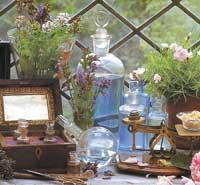Flower Perfumes Thieves
2001/04/22 Mendiburu, Joana - Elhuyar Zientziaren Komunikazioa
Unlike these areas, for researchers looking for a pleasant smell to create perfumes, spring is 12 months old and therefore do not believe that today's theme is an example of little imagination. These perfumes that are sold around Christmas require a delicate and non-romantic work all year round.

The first job is to capture new flowers. But how do you take it to the lab? Is it necessary to identify compound odors without damaging the flower as appreciated as the sweet smell? Answering these kinds of questions, this is an invitation to get into the world of smells and know the history of perfumes.
The perfumes used today are composed of aromas (or imitations) from afar. This, in itself, is not a discovery, unless you define how far it is. As everything is relative, it is understandable to think of those wonderful islands and protected spaces that we are exotic to say far, because after all it is true that many times they will seek new flowers to wonderful protected areas. But no, that's not that far. There is a remote space, and that is well known by the plants used for perfumes (at least those that have had the opportunity to travel).
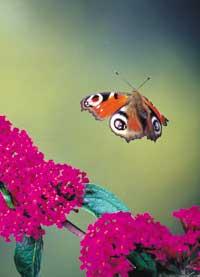
Like other inventions of science, they casually discovered that flowers do not expel the same perfume on the ground and in space. Some suspicions would occur when the pink Overnight Scentsation, known in the perfume industry, was sent into space. It was in 1998, on the voyage of the ship Discovery in October of that same year. John Glenn- was the astronaut in charge of taking care of the flower. According to expert Braja Mookherjee, "in space the proportion of molecules that determine the sweet aroma of the flower changes.
On the ground, this rose has marked a vegetable odor and in microgravity, the floral odor gains strength to the detriment of the plant odor". But if it has a different smell in space and on earth, how did it go down from space to the ground without any change?
How is it captured?
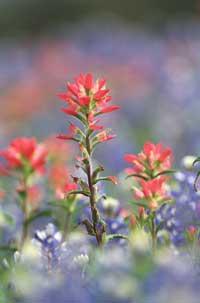
The smell of each flower is very variable. By changing for any factor, the headache of perfumes has consisted in learning to transport the smell observed in space or in protected areas away from the laboratory. And it is one thing to make long trips and find new smells, and another very different thing is to bring that same smell to the laboratory.
It seems that it is enough to put the flower that smells in a boat and take the road back, but not. By introducing an odorous substance into a pot, a balance is established between the substance and the molecules it releases, and when it is opened, the smell of the starting substance is not detected. In addition, in 1988 Braja Mookherje showed that the cut flower does not motivate the same smell as before cutting. Therefore, before the balance between the pot and the chemicals, the smell (if not too much) also changes.
But the results of his investigations went beyond this statement. He came to demonstrate interactions between plants. For example, peach and apricot or rose and jasmine together secrete new perfumes. As if talking among them... In addition, the smell emitted by flowers depending on the time of day and the aging of flowering varies.
In view of all this, probably more than the desire not to spoil the flower, a technique called headspace was developed to trap the smell, with the aim of being able to carry the smell in the same way to the laboratory. The technique serves to catch the smell without cutting, breaking and away from its surroundings.

The technique must be careful but at the same time simple. First you have to put the flower in a bell-shaped glass container, very carefully. It is important to adapt the shape of the container to the shape of the flower to avoid minor injury. Subsequently, the smell that the flower gives off when closing the container is absorbed by means of a pump for about an hour to collect the aromatic molecules of 10-50 micrograms necessary for analysis. Finally, scented air passes through a filter to catch molecules. Before reaching the laboratory it will be cleaned with an organic solvent. It is mandatory that the resulting liquid enter a clean container and in a cool place until it reaches the laboratory.
The main contribution of this technique is undoubtedly to be able to capture the smell without damaging the flower. But it seems that for perfumers this was not enough. A bell-shaped container captured the smell of all parts of the flower, which was not enough to find new molecules. About ten years ago, with the same idea, the new technique began to be designed. Currently, the shape of the bell is replaced by a syringe. Thus, only the vapor that secretes a petal or gardener is captured, which has been a great advance in the chemical synthesis of sweet aroma compounds. It has managed to catch smells that until then escaped, such as jasone, one of the main components of jasmine.
More steam and cheaper

Before developing this technique, perfumers used only 500 natural substances and 3,000 synthesized substances to make perfumes. And, of course, that was a limit that must be overcome in some way to continue designing new perfumes. In addition, not only the techniques used to capture molecules, but also the rest of those used in laboratories. Due to solvents and the heating process to separate the components of the mixture, odor molecules underwent major changes. In this way, the molecules collected were even foreign to the initials.

Today, thanks to technical advances, in addition to capturing aromas, synthetic compositions are made very similar to natural extracts. Although the pockets of the consumer have not noticed it, perfumers work more and more with these substances, much cheaper. It is no wonder that to get a kilo of jasmine worth 4,000 dollars (20,000 pounds, 500,000 pesetas), 700 kg of flowers are needed.
çMaking a nightmare in the world of smells is impossible to know the composition of the known perfume (that is secret), but at least what is behind the colorful flowers, the aromas they throw and the beauty of perfumes is no longer secret.
Defending with perfume in the absence of arms
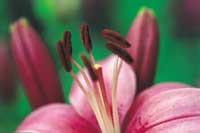
These animals chase away insects thanks to their hands, clays or legs. On the other hand, sick plants cannot do so without the help of the strong wind. The worst, however, is that the most appreciated foods of insects are the broad leaves of plants. But plants don't have their arms crossed (they don't have arms) and pull out their weapon when they need it. These annoying insects use, among other things, sharp pointed thorns and attractive smells. As if they did not dare to do something that questioned its beauty, to scare off insects do not release bad smells.
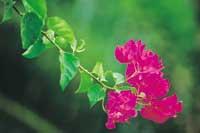
When attacked by an insect they release the smell that attracts the parasites of the insect larvae. For example, tobacco plants, cotton or corn attack Heliothis virescens insects by releasing the perfume that attracts a type of Cardiochiles nigriceps wasp. It seems that if another insect is attacked this characteristic smell changes.
The aromas of the flower not only attract perfumers!
Published in the supplement Natura de Gara

Gai honi buruzko eduki gehiago
Elhuyarrek garatutako teknologia



